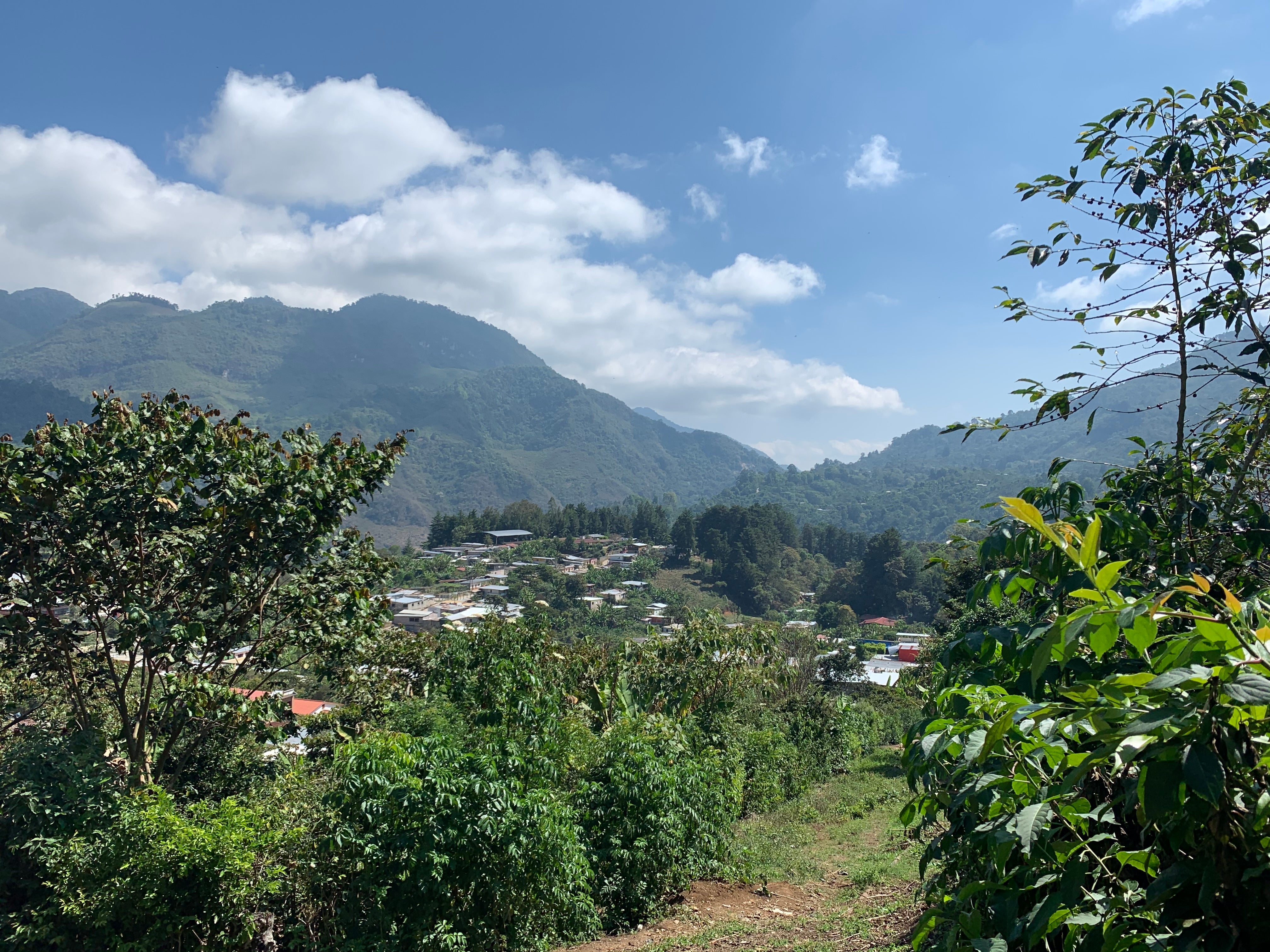Although Laos is relatively new to specialty coffee, its coffee-growing history dates back approximately 100 years, to when French colonists cultivated arabica, robusta, and liberia trees. The growth of the coffee industry seemed promising, but it essentially failed due to leaf rust and the start of World War I and II. When French colonists had left the region, Laotian subsistence farmers were left to tend to coffee trees with little knowledge of how to best grow and produce coffee. Any small amounts of coffee that were grown were inconsistent and likely sold to coffee buyers who would use them for commercial or instant coffee.
 An old robusta tree with green and ripe cherries. Laotian farmers were encouraged to grow robusta trees in the 1950s after arabica trees were destroyed by coffee leaf rust. Robusta trees are more disease-resistant.
An old robusta tree with green and ripe cherries. Laotian farmers were encouraged to grow robusta trees in the 1950s after arabica trees were destroyed by coffee leaf rust. Robusta trees are more disease-resistant.
In the last twenty years, initiatives began to take root. Subsistence farmers were encouraged to grow coffee, especially in rural, mountainous areas inhabited by ethnic minorities where economic opportunities are limited. Thanks to efforts by the Lao government and international development organizations, coffee has helped reduce poverty in rural areas, and coffee has become one of Laos’ top agricultural exports.
The Bolaven Plateau in southern Laos is rich in volcanic soil and receives ample rainfall. It’s a prime area for vegetation, and 95% of Laotian coffee is grown here. Near the Paksong village in Champasak province, Covoya Coffee works with smallholder farmers to grow coffee trees. Farmers are fully trained and educated in plant nutrition, plant health management, and coffee cherry harvesting. Farmers manage several varieties, and among the five we sampled, we found two lots exceptional—so we bought them both!
Laotian coffee is often characterized by a raw-sugar sweetness with mild, earthy, and citrus notes. Our first lot is exclusively composed of the typica variety, and this washed coffee highlights the very best of the Chamapsak terroir. This coffee is sweet and chewy, reminiscent of dried fruits, but finishes clean with balanced citric acidity. It reminds us of tamarind, palm sugar, and pomelo. It’s a coffee with true Southeast Asian flavors and can be enjoyed any time of day.
 The coffee flowering process is triggered after heavy rainfall. In the Bolaven Plateau, the rainy season is from May to October, and arabica coffee cherries are harvested from November through January. The Bolaven Plateau has volcanic soil rich in minerals, making it an ideal place for growing coffee and other crops, including bananas, rubber, pineapples, and tea.
The coffee flowering process is triggered after heavy rainfall. In the Bolaven Plateau, the rainy season is from May to October, and arabica coffee cherries are harvested from November through January. The Bolaven Plateau has volcanic soil rich in minerals, making it an ideal place for growing coffee and other crops, including bananas, rubber, pineapples, and tea.
Our second Laotian coffee is a washed gesha variety with a more delicate but elegant flavor profile. Gesha coffee trees are hard to grow; they require high elevation, ample shade, and good soil to mature and produce cherries. This lot has floral aromatics, and its stonefruit and tea-like flavors are layered and slowly reveal themselves as it cools. We like this coffee best when the beans are ground slightly coarser, brewed using a pourover, and enjoy it the most after it’s had a few minutes to cool. This method shines a spotlight on its delicate notes of red plum, white oolong tea, and honeysuckle.
It’s always exciting to taste coffees from new specialty coffee regions, and we’re delighted to feature two deliciously distinct coffees from Laos. Whether you prefer more caramelized notes or floral tea notes in your coffee, we encourage you to try both and experience some of the very best coffees Laos has to offer!
Laos Champasak Bolaven Plateau
Tamarind, Palm Sugar, & Pomelo Starting at $15.25Although Laos has been producing coffee for over a century, a national effort towards increasing ...
Shop Now




